Intel Overclocking Platform
Our midrange Intel platform focuses on overclocking as a primary consideration, but we aren't looking at achieving maximum clock speeds or performance. Instead, we wanted to focus on a platform that would allow us to get the largest overclock relative to the basic clock speed. Gaming is a second consideration, and while the final result might be slower in some games compared to the AMD configuration listed on the previous page, it's certainly no slouch.
| Intel Overclocking/Gaming System |
| Hardware |
Component |
Price |
Rebates |
| Processor |
Intel Core 2 Duo E4300 (1.80GHz 2MB Shared) - Retail |
$135 |
|
| Heatsink |
Thermalright Ultra 120 + Fan |
$70 |
|
| Motherboard |
GIGABYTE GA-965P-DS3 (LGA 775 P965) |
$116 |
|
| Memory |
Transcend JETRAM 2x1GB DDR2-800 (5-5-5-12 JM2GDDR2-8K) |
$113 |
|
| Video Card |
PNY GeForce 8800GTS 320MB (VCG88GTS32XPB) |
$276 |
$20 |
| Hard Drive |
Seagate Barracuda 7200.10 ST3320620AS 320GB 16MB |
$80 |
|
| Optical Drive |
Pioneer Black DVR-112D 18X DVD+R |
$38 |
|
| Case |
COOLER MASTER Centurion 534 (RC-534-KKN2-GP) |
$66 |
|
| Power Supply |
CORSAIR 520W (CMPSU-520HX) |
$125 |
$10 |
| Display |
Sceptre X20WC-Gamer 20.1" 5ms (1680x1050) |
$235 |
$30 |
| Speakers |
Logitech X-530 5.1 70W Speakers |
$74 |
|
| Keyboard and Mouse |
Microsoft Comfort Curve 2000 B2L-00047 |
$28 |
|
| Operating System |
Windows MCE 2005 or Vista Home Premium (OEM) |
$115 |
|
| Bottom Line |
|
$1471 |
$1411 |
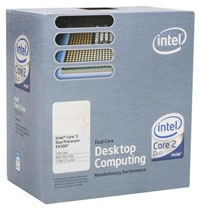 |
The least expensive Core 2 Duo processor ends up being the most sensible choice for getting the largest percentage overclocks, so compared to the entry level Intel configuration you don't even have to spend more money on this area. The E4300 has a base clock speed of 1.8GHz but uses a 200 MHz front side bus, whereas the more expensive E6300 has a 266 MHz front side bus. What that means is we don't need a motherboard or memory capable of running at insane bus speeds in order to get perhaps as much as a 100% overclock. The E6320 and E6420 will increase the amount of L2 cache while keeping the same clock speeds and bus speeds as the E6300 and E6400 respectively, but the new chips aren't available yet. Prices should also be dropping a bit more in the near future on Intel processors, so if you wait a few weeks you might be able to save another $20 or so. If you can spare the extra change, moving straight up to the E6600 can get you the best of both worlds - more cache and the ability to still reach 3.6GHz and beyond - but while that's a good choice for stock or overclocked systems, the E4300 remains the best bang for the buck in terms of pure overclocking ability.
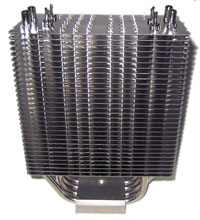 |
To aid in overclocking, we added an aftermarket heatsink. The Thermalright Ultra 120 currently sits on top of our heatsink performance charts, so it was the logical choice. In truth, the Thermalright Ultra 120 Extreme is the best air cooler we've tested so far, but we still couldn't find it in stock anywhere. It should be arriving any day now, and it shouldn't cost more than a few dollars more than the stock Ultra 120, so if you can find it in stock we would recommend that instead. Either way, CPU temperatures shouldn't be the limiting factor when it comes to overclocking with these heatsinks.
 |
Given our selection of processor, we can pretty much choose any of the midrange performance motherboards on the market and come close to our target 3.6GHz. While nForce 650i Ultra motherboards have started to show up at retail, it's a bit early to say whether or not they are truly better than the P965 platform, especially when it comes to overclocking and maturity. Since the chipset first launched six months ago, Gigabyte's GA-965P-DS3 has been a popular motherboard in this market. The latest revision improved overclocking in terms of maximum bus speeds, but here you can choose to save $15 and stick with the earlier revision, unless you plan on selecting some other parts that might allow you to reach a 500 MHz FSB. This Gigabyte board earned our Silver Editors' Choice award, and for the price it remains one of the best P965 offerings.
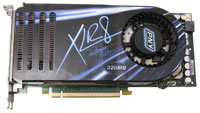 |
After spending a bit more money on aftermarket cooling, we opted to cut costs in the graphics department. We mentioned the option of purchasing a GeForce 8800 GTS 320MB already, and you end up saving over $100. We'll take that route this time, selecting the PNY offering that is a standard reference card design (500/1600 clocks). If maximum gaming performance isn't a primary concern, selecting one of the newly released and less expensive GeForce 8600 GT/GTS cards is another possibility. Again, waiting to see what AMD has up their sleeve with the R600 graphics card series wouldn't be a bad idea either.
 |
Considering that overclocking tends to stress systems quite a bit more than running at stock speeds, we felt the move from relatively generic power supplies to a quality aftermarket solution was warranted. We tossed around several brands, including SeaSonic and Silverstone, but in the end we selected the Corsair 520W. This power supply is anything but cheap, but we've had enough lesser power supplies fail during overclocking that we decided to be prudent and spend the money upfront rather than waste time and money swapping power supplies in the future.
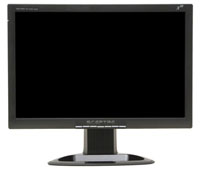 |
As an alternative to the 22" LCD we listed on the AMD gaming configuration, the Sceptre X20WC-Gamer is a 20.1" widescreen LCD that has the same native resolution as the Acer 22". With the rebate, you can save about $70 and some might argue that the Sceptre actually looks better. We wouldn't necessarily go that far, as both LCDs are pretty clearly looking to keep costs down. Which LCD do we prefer? One of the 24" LCDs, as they invariably look better and offer more features! Really, though, it's up to the individual to decide which is more important: size, price, and/or quality.
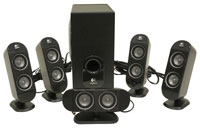 |
You may have noticed that we didn't list any sound cards on our midrange solutions. Creative's Sound Blaster X-Fi has basically been the undisputed king of gaming sound cards since it became available, but the changes made in Windows Vista in regards to sound make us hesitant to spend any extra money on a sound card right now. We've encountered at least a few systems that simply don't work properly with X-Fi cards under Windows Vista, so if you have any intention of upgrading to the new operating system you might want to hold off and only purchase a sound card once you're sure you need/want it.

















46 Comments
View All Comments
Zepper - Monday, April 23, 2007 - link
You don't have to pay a lot for a decent PSU. The iStar TC-350PD1 is under $40 right now on sale. Even Athenatech has some lower end cases with Fortron/Sparkle PSUs. But you don't act like PSUs are important when testing them separately and then turn around and recommend a junk-bucket even for a budget system..bh.
JarredWalton - Tuesday, April 24, 2007 - link
The case + PSU is $65 shipped. It's actually a pretty decent looking case as well, all told. Now, the iStar costs about $45 shipped at eWiz, which means that you need to find a $20 case that you're happy with or else spend more money. I freely admit that I skimp on PSUs on budget systems, but that's really nothing too surprising. An $80 motherboard with IGP is "skimping", 1GB of RAM is "skimping", etc. They'll all still work fine for most people, but anyone looking to add a GPU, better PSU, etc. quickly vaults into the midrange prices.I supported Dell PCs for several years at another job, and I think they skimp at least as much as anything I've listed here. One year, almost all PCs were fine. Between 12 and 24 months, we had probably 10% fail, many with motherboards and several with PSUs. Past two years, I think the failure rate was approaching 20%, again on mobos and PSUs primarily. I feel a lot worse about cutting costs and quality on a motherboard than I do about going with cheaper PSUs, at least in the budget sector.
JarredWalton - Tuesday, April 24, 2007 - link
Oh, and for that matter I think the LCDs on the low end are suspect as well. I tried to go with ones that are getting favorable ratings, but a lot of people basically seem to say, "Wow - LCDs look cool and it only cost $180! 5 stars!" The thing is, for people that don't go beyond that sort of critique, it probably *is* a five star LCD! That's the same with PSUs and cases. I don't think any serious enthusiast is going to build a decent PC using a budget case and PSU.For the record, the few times I've used Raidmax cases and PSUs (whatever brand they happened to be), I have never had a complaint. Both systems are still running (Athlon XP 2500+) after four years or so. Not bad for a cheap $65 case and PSU. Was I just lucky? Maybe, but that's my experience with budget systems and Raidmax cases. (And also for the record, the people I built those PCs for thought the case looked "l33t" and specifically chose it; I thought it looked gaudy and stupid. No accounting for taste.)
jay401 - Friday, April 20, 2007 - link
That would be the E6320 and E6420. The 50 series doesn't come out until August and will sport higher clockspeeds and higher FSB (1333MHz).
And the question: Any word yet if the Ultra 120 Extreme has been updated to address the concern you guys listed in the review (something about a bracket when trying to mount it on s775 boards)?
Thanks!
redbone75 - Saturday, April 21, 2007 - link
I actually saw the E6320 and E6420 available at Newegg.com on thursday night. Strangely enough they aren't listed there tonight. Both processors are available at zipzoomfly.com, though.jay401 - Friday, April 20, 2007 - link
Dear AMD,This is the final proof you have delayed your R600 GPU series for too long: You didn't even get them out in time for the rarely seen Anandtech Buyer's Guide!
Sincerely,
Disappointed in Delaware
:D